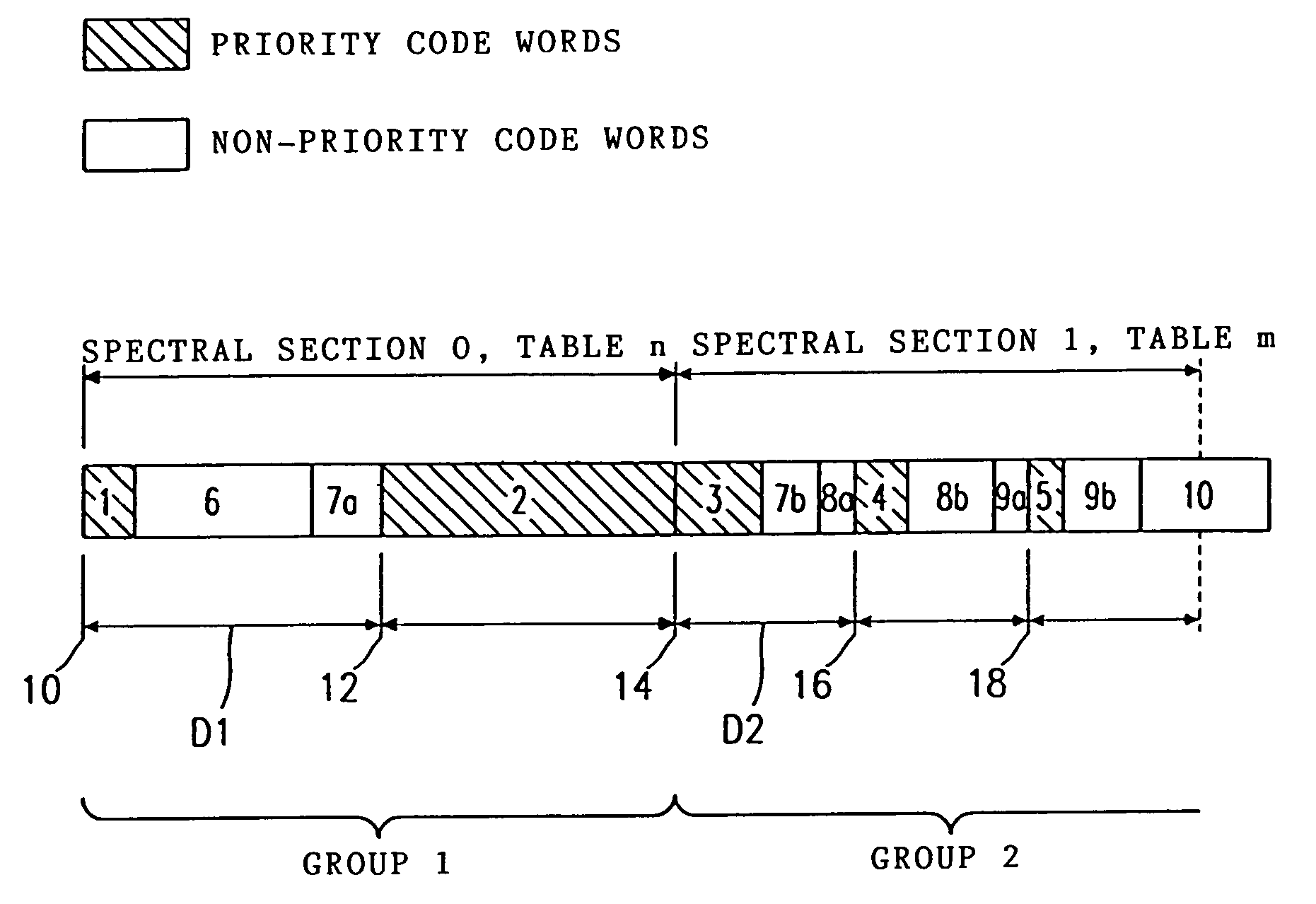Methods and devices for coding or decoding an audio signal or bit stream
a technology of audio signal and bit stream, applied in the field of methods and devices for coding or decoding an audio signal or bit stream, can solve the problems of huffman codes, afflicted channels are error propagation, and all the other code words following the disturbed code word cannot be decoded properly either
- Summary
- Abstract
- Description
- Claims
- Application Information
AI Technical Summary
Benefits of technology
Problems solved by technology
Method used
Image
Examples
Embodiment Construction
[0041]To illustrate the present invention, priority code words are shown hashed in FIG. 2, which represents a known arrangement of code words of different lengths which increases linearly with the frequency. In FIG. 2 priority code words are the code words No. 1–No. 5. As has already been explained above, the code words which are assigned to spectral values of low frequency are priority code words if the audio signal e.g. contains a high speech content or relatively many low-frequency tones. The code words No. 6–10 in FIG. 2 are associated with higher frequency spectral values which, while contributing to the overall impression of the decoded signal, do not greatly affect the auditory sensation and are thus psychoacoustically less significant.
[0042]FIG. 1 shows a bit stream with a number of raster points 10–18, where the distance between the raster point 10 and the raster point 12 is labelled D1 and the distance between the raster point 14 and the raster point 16 is labelled D2. As ...
PUM
 Login to View More
Login to View More Abstract
Description
Claims
Application Information
 Login to View More
Login to View More - R&D
- Intellectual Property
- Life Sciences
- Materials
- Tech Scout
- Unparalleled Data Quality
- Higher Quality Content
- 60% Fewer Hallucinations
Browse by: Latest US Patents, China's latest patents, Technical Efficacy Thesaurus, Application Domain, Technology Topic, Popular Technical Reports.
© 2025 PatSnap. All rights reserved.Legal|Privacy policy|Modern Slavery Act Transparency Statement|Sitemap|About US| Contact US: help@patsnap.com


